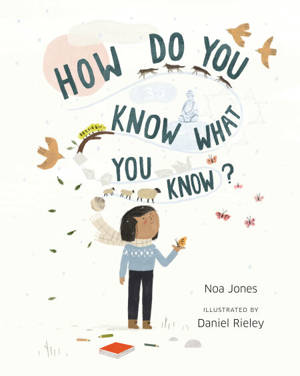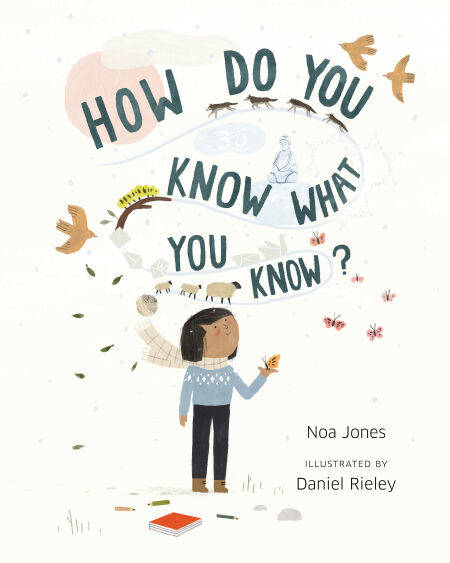
- Afhalen na 1 uur in een winkel met voorraad
- Gratis thuislevering in België vanaf € 30
- Ruim aanbod met 7 miljoen producten
- Afhalen na 1 uur in een winkel met voorraad
- Gratis thuislevering in België vanaf € 30
- Ruim aanbod met 7 miljoen producten
Zoeken
Omschrijving
2024 NAPPA Award winner
A charming and inquisitive story that celebrates tracing the origin of ideas, language, and every day objects, for children 4–8.
Where does snow come from? What language did the word thermos come from? And who was the Buddha's teacher?
So many problems in the world come from accepting information at face value without looking into where it comes from. How Do You Know What You Know? follows a child and their father on a cozy, snowy day outing. The child asks questions about how things came to be the way they are. The questions range from how the father knows how to tie a shoe to why it’s not a good idea to eat yellow snow. These queries are met by the father with patience and humor that weave a delightful narrative of intergenerational knowledge sharing. In this exchange, respectful inquiry is beautifully modeled for young learners.
The journey includes an amble in the park, a trip to the library, a bus ride, and a visit to a local Buddhist temple where the father is a student. The teacher there introduces the child to the idea of lineage, that wisdom and understanding comes from generations of knowledge passed down from person to person. With a quaint and welcoming simplicity, the illustrations bring this beautiful story to life, and every spread has a subtle nod to the progression of how things come to be the way they are. The story encourages children’s natural curiosity and shows them that everywhere they look there is a story to be told if we just ask.
A charming and inquisitive story that celebrates tracing the origin of ideas, language, and every day objects, for children 4–8.
Where does snow come from? What language did the word thermos come from? And who was the Buddha's teacher?
So many problems in the world come from accepting information at face value without looking into where it comes from. How Do You Know What You Know? follows a child and their father on a cozy, snowy day outing. The child asks questions about how things came to be the way they are. The questions range from how the father knows how to tie a shoe to why it’s not a good idea to eat yellow snow. These queries are met by the father with patience and humor that weave a delightful narrative of intergenerational knowledge sharing. In this exchange, respectful inquiry is beautifully modeled for young learners.
The journey includes an amble in the park, a trip to the library, a bus ride, and a visit to a local Buddhist temple where the father is a student. The teacher there introduces the child to the idea of lineage, that wisdom and understanding comes from generations of knowledge passed down from person to person. With a quaint and welcoming simplicity, the illustrations bring this beautiful story to life, and every spread has a subtle nod to the progression of how things come to be the way they are. The story encourages children’s natural curiosity and shows them that everywhere they look there is a story to be told if we just ask.
Specificaties
Betrokkenen
- Auteur(s):
- Illustrator(s):
- Uitgeverij:
Inhoud
- Aantal bladzijden:
- 32
- Taal:
- Engels
Eigenschappen
- Productcode (EAN):
- 9780834845251
- Verschijningsdatum:
- 2/10/2023
- Uitvoering:
- E-book
- Beveiligd met:
- Adobe DRM
- Formaat:
- ePub 3 Fixed Layout

Alleen bij Standaard Boekhandel
+ 18 punten op je klantenkaart van Standaard Boekhandel
Beoordelingen
We publiceren alleen reviews die voldoen aan de voorwaarden voor reviews. Bekijk onze voorwaarden voor reviews.








